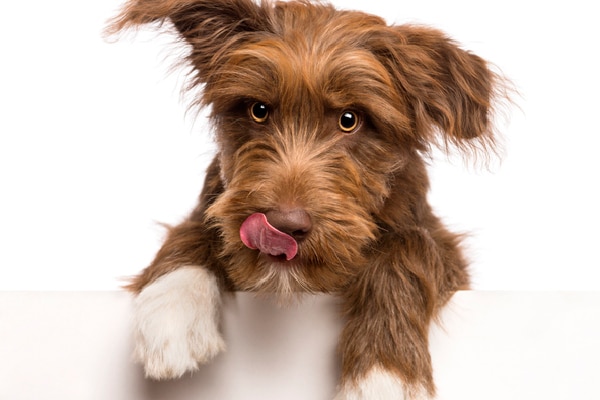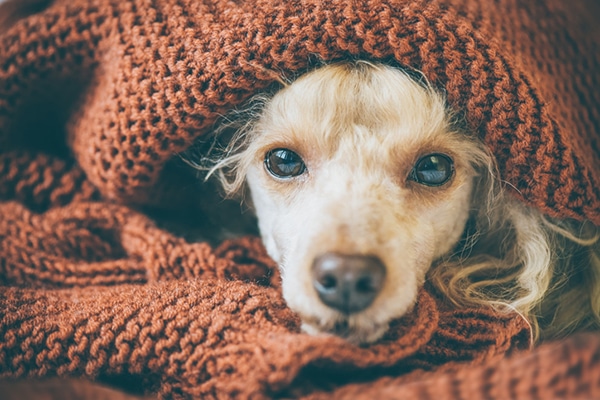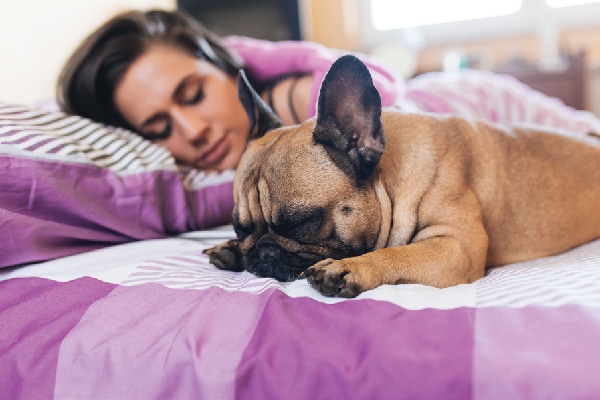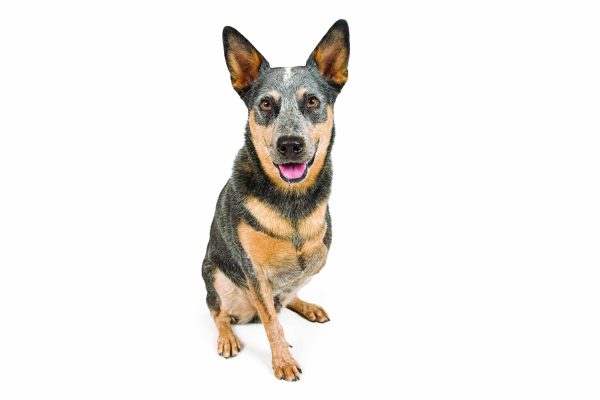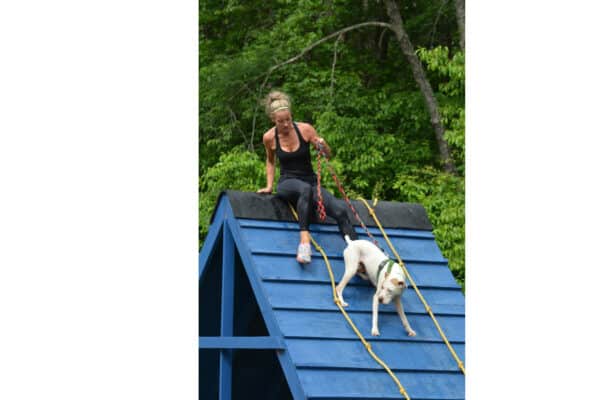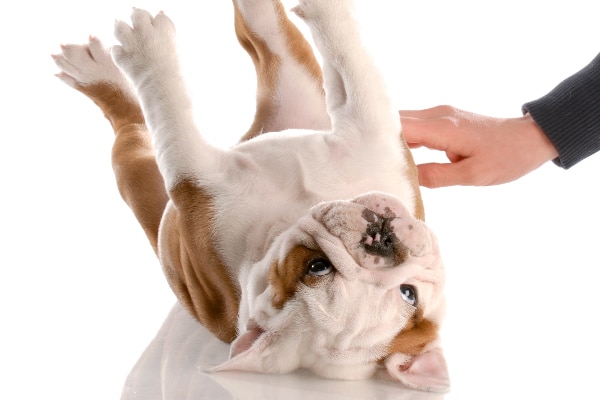The post How to Make a Dog Vomit by Stephanie Osmanski appeared first on Dogster. Copying over entire articles infringes on copyright laws. You may not be aware of it, but all of these articles were assigned, contracted and paid for, so they aren’t considered public domain. However, we appreciate that you like the article and would love it if you continued sharing just the first paragraph of an article, then linking out to the rest of the piece on Dogster.com.
It should go without saying but sometimes, curious doggos get their little nosies into things they’re not supposed to. And sometimes, those curious canines swallow things they’re not supposed to. Which brings us to a common question that many pet owners have: Is it ever okay to make your dog intentionally vomit in an emergency situation? If there are situations where you should make your dog vomit, you may be wondering how to make a dog vomit. Let’s look at some specifics and some options for how to make a dog vomit below.
In certain emergencies, it may be in your dog’s best interest to induce vomiting. Such emergency situations include if your dog swallows anything that can cause blockage in the intestines or substances that are toxic to dogs. Before we get into the steps involved with how to make a dog vomit, remember it’s important to always call your veterinarian or pet poison control before inducing vomiting at home. Keep reading to find out how to make a dog vomit — and when it’s appropriate to make a dog throw up.
First, should you make your dog vomit?
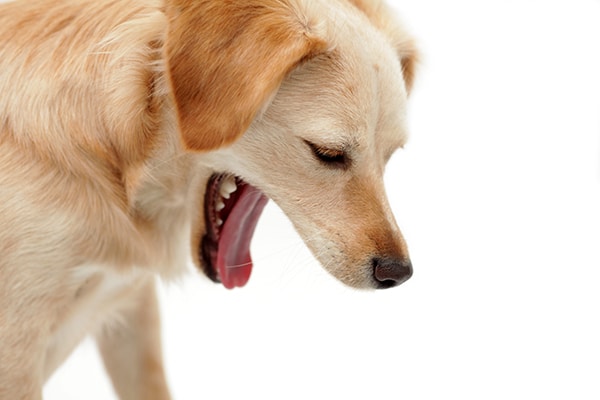
Should you make a dog vomit? It depends on a few factors. Photography by Kickers / iStock.
As a dog parent, emergency situations may arise in which you may need to know how to make a dog vomit — in a way that’s safe for both you and your pet. According to Dr. Katja Lang, a veterinarian at NYC’s Heart of Chelsea Animal Hospital, dog parents should only consider making their dogs vomit in emergency situations where poison or blockage is a concern.
“Indications for emesis are if your pet ate something that could potentially cause an intestinal blockage or something toxic [like] grapes, rat poison, chocolate or xylitol-containing gum,” Dr. Lang adds.
So, your dog swallowed something — now what?
If it is a time-sensitive poison, you should make your dog throw up at home. Antifreeze is such an emergency. Antifreeze can be fatal and damage can occur within 30 minutes. And you’ll still need to rush your dog to the emergency vet clinic after inducing vomiting. The Pet Poison Helpline says that “Aggressive therapy is necessary to survive.”
For everything else, your first step should be to call your vet and ask if you should induce vomiting at home or rush him to the emergency vet because dog vomit must be examined on a case-by-case basis. It is always better to induce vomiting at the clinic where they can deal with anything that goes wrong and also do the necessary follow-up care.
Determining if you should make your dog throw up
“The safety of induction of vomiting depends on the ingested material — soft things like toys and socks are okay,” Dr. Brooke Champers, a veterinarian at Animal Emergency Services, says.
Dr. Lang concurs. “Small, soft objects (sock, squeaky toy, etc.) and toxins that won’t damage the esophagus are good candidates for induction of emesis,” she explains.
But, as Dr. Lang warns, be wary of sharp objects. Making your dog throw up something with sharp edges may do more harm than good.
“Do not induce vomiting with any sharp or caustic toxins like chicken bones or batteries,” Dr. Lang says.
So, what’s the difference between vomiting up a chicken bone and a sock? According to Dr. Jeff Werber, the swallowed chicken bone should take care of itself internally and poses more of a threat if vomited up.
“In most cases, the bone will be eliminated safely through the intestines. In the rare instance that surgery is required, it is preferable and safer to retrieve bones from within the stomach as opposed to in the esophagus,” Dr. Werber says. “However, these surgeries are not often needed.”
Dr. Champers further explains the dangers of sharp objects. “The size of the bone depends on the size of the dog and if there are sharp edges,” she says. “A radiograph should ideally be taken prior to assess the risk involved.”
As for chemicals, anything potentially toxic could be a strong candidate for the induction of emesis. Call your vet immediately if your dog has swallowed a potentially toxic chemical to see if he wants you to induce vomiting at home or at the clinic. Corrosive, acidic or alkaline materials should be handled at your vet’s office.
How to make a dog vomit — safely
In you have assessed the risks, contacted a veterinarian and, under the guidance of a medical professional, you (and your vet) feel that induction of vomit is your pet’s best option, here’s how to make a dog vomit, as outlined by Dr. Lang.
- Call Pet Poison Control or your veterinarian to ensure making your dog vomit is the right course of action. The number for Animal Poison Control is (888) 426-4435.
- Think about what time the pet ingested the toxin and when they last ate. It should be within 2-3 hours of toxin ingestion. A small amount of food will make emesis more successful.
- Make sure your pet is alert. Do not induce vomiting if your pet seems disoriented or drowsy.
- Administer a small volume of hydrogen peroxide based on your veterinarian’s recommendation.
- Monitor your pet closely after emesis. There is a small risk of aspiration (stomach contents entering the lungs), especially in brachycephalic dog breeds.
- Contact your veterinarian or pet poison hotline to see if you need any follow-up treatment to minimize other effects from the toxin.
How to identify the different types of dog vomit
Now that you know how to make a dog vomit, you might have the lovely task of distinguishing your dog’s vomit. Or maybe your dog has thrown up of her own accord. Either way, it’s important to understand what your dog’s vomit is telling you.
Just like in humans, different types of dog vomit suggest different things. Being able to identify what the different types of dog vomit actually mean is crucial to advocating for your pet’s health.
“The first step is to differentiate true vomiting from regurgitation as these processes can look very similar in dogs,” says Dr. Lauren Adelman, DVM, DACVIM (SAIM). “The main difference is that regurgitation tends to be a passive process while vomiting includes active abdominal contractions.”
“You often hear a dog begin to vomit (dry heaving) or see her become nauseous (salivation) prior to the actual act of vomiting,” Dr. Adelman continues. “Whereas with regurgitation, the dog will just bring up food or water without any warning. Contrary to popular belief, other factors such as timing related to eating and the consistency of the material brought up (digested or undigested) is not useful for differentiation.”
But there’s more to examining a dog’s throw-up. In fact, the color of your dog’s vomit is important information.
Identifying different colors of dog vomit
“If you have confirmed that your dog is vomiting, describing the vomit to your veterinarian may be helpful,” Dr. Adelman says. “For example, blood in the vomit can appear bright red or, if it has had time to be digested, dark brown or black, described as coffee grounds.”
Vomit can often present itself in many ways: white foam (which often indicates ingesting toxins or poisons), yellow (inflammation caused by bile back-up) or red (which indicates blood and usually warrants a trip to the vet’s office).
Please remember throughout this process, that the most important thing you can do in order to help your pet is to consult a veterinarian before taking any other medical action.
Thumbnail: Photography ©yellowsarah | iStock / Getty Images.
This piece was originally published in 2018.
About the author
Stephanie Osmanski is a freelance writer and social media consultant who specializes in health and wellness content. Her words have appeared in Seventeen, Whole Dog Journal, Parents Magazine and more. She is currently pursuing an MFA in Creative Writing at Stony Brook Southampton and writing a memoir. She lives in New York with her Pomsky, Koda, who is an emotional support animal training to be a certified therapy dog.
Read more about dog health and care on Dogster.com:
The post How to Make a Dog Vomit by Stephanie Osmanski appeared first on Dogster. Copying over entire articles infringes on copyright laws. You may not be aware of it, but all of these articles were assigned, contracted and paid for, so they aren’t considered public domain. However, we appreciate that you like the article and would love it if you continued sharing just the first paragraph of an article, then linking out to the rest of the piece on Dogster.com.
